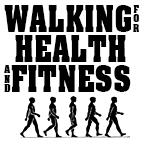Feeling Off Track? You’re Not Alone.
Vacations, BBQs, late nights—it happens to all of us. One missed walk or workout can quickly snowball into a week, or even longer, and before you know it the healthy routine you worked so hard to build has slipped away.
But here’s the good news: you don’t need a gym membership, complicated machines, or punishing workouts to restart. What you need is a reset—a simple, structured plan that builds confidence, consistency, and momentum.
So let me ask you: what if you could reset your health, your energy, and your fitness habits in just 14 days? Would you take that first step?
That’s exactly what this blog post—and Episode 30 of the Walking for Health and Fitness Podcast—is all about.
Why Walking Works as the Ultimate Reset
Walking is the most accessible form of exercise. It’s free, familiar, and welcoming. Unlike many gym routines, it doesn’t require special skills or equipment. And the science is clear:
A brisk walk lowers your risk of diabetes, high blood pressure, and high cholesterol just as much as running—without the joint stress (Harvard Medical School).
Walking lubricates the joints, strengthens supportive muscles, and even reduces arthritis-related pain.
It boosts brain chemistry, releasing dopamine and serotonin that improve mood, motivation, and focus almost instantly.
As I often say: walking is the closest thing we have to a wonder drug.
The 14-Day Walking Reset Framework
Why 14 days? Two weeks is long enough to see real change, but short enough to feel doable. Research in the European Journal of Social Psychology shows it takes about 66 days to form a lasting habit—but those first couple of weeks are the most critical.
Here’s how to structure your reset:
Days 1–2: Just Start
Day 1 is about proving to yourself that you can begin. No distance or speed goals—just walk.
On Day 2, do the 10-minute Time Test. Walk for exactly 10 minutes, mark where you stopped, and remember that point. This becomes your baseline. In 14 days, you’ll walk past that spot easily—and the visual proof of progress is incredibly motivating.
Days 3–7: Add Structure
This is where walking becomes routine. Focus on:
Walking consistently every day.
Practicing proper form.
Logging your time and miles.
As you track your progress, you’ll notice improved energy, better sleep, and a lighter mood.
Days 8–14: Expand
In the second week, it’s time to mix things up:
Add variety with brisk intervals or longer walks.
Celebrate wins—every step counts.
Journal one thing you’re grateful for each day.
Reflect on how you felt before and after your walk.
By the end of two weeks, walking won’t feel like a chore—it will feel like part of who you are.
“It’s going to be a journey. It’s not a sprint to get in shape.” – Kerri Walsh Jennings, Olympic Champion
The Power of Logging, Wins, and Gratitude
You may be wondering: what do journaling and gratitude have to do with getting in shape?
The truth is, fitness isn’t just physical—it’s mental. These small practices rewire your brain for consistency:
Logging miles makes your progress real and measurable.
Writing down wins releases dopamine, your brain’s motivation chemical.
Gratitude journaling reduces stress and keeps you focused on progress instead of setbacks.
Reflecting on walks builds awareness and reinforces positive change.
These tools stop the slide when one missed day threatens to become a week. They’re not extras—they’re essentials.
As James Clear, author of Atomic Habits, reminds us:
“You do not rise to the level of your goals. You fall to the level of your systems.”
Your 14-day reset is your system.
Overcoming Real-World Roadblocks
Every walker faces obstacles. Here’s how to beat them with your reset tools:
Lack of Time → Break walks into 5–10 minute sessions. Log every step—it all counts.
Low Motivation → Anchor to your “why.” Write down a small win and one gratitude each day.
Bad Weather → Have a Plan B: walk indoors, on a treadmill, or at the mall. Reflect on how you feel after—it’s always better.
Fear of Injury → Follow the 14-day gradual build. Logging helps you adjust before issues arise.
Lack of Support → Share your logs, join a walking group, or simply create accountability through journaling.
Obstacles don’t mean failure—they mean you’re human. With the right strategies, they become stepping stones instead of barriers.
Your Step Forward Challenge
Want to start today? Here’s your challenge:
Day 1: Just walk. Log your time and how you feel.
Day 2: Do the 10-minute Time Test. Mark your spot.
Day 14: Repeat the test. You’ll pass that spot easily—and you’ll feel the difference.
This is how real change begins: not with intensity, but with consistency.
Take It Further with the Walking Works Program
If you’re ready to go beyond the 14-day reset, I created the Walking Works Program to give you structure, support, and accountability.
YOU GET:
✔️ Day-by-day walking routines
✔️ 14 daily motivational emails
✔️ Videos on stretching, warm-ups, and walking form
✔️ Guided visualizations and meditation tracks
✔️ Pacing music to keep your stride strong
✔️ 10 weeks of follow-up coaching
👉 Learn more here: Walking Works Program
Final Thoughts
Getting back in shape doesn’t require perfection. It requires a reset—and walking gives you the simplest, most powerful reset there is.
So don’t wait for the “perfect” time. Start today. Take that first walk, log your win, and commit to 14 days.
💬 Question for you: What’s the biggest obstacle that keeps you from walking consistently—time, motivation, or something else? Share your thoughts in the comments below.
🎧 Read more about the 14-Day Walking reset in Episode 30 of the Walking for Health and Fitness Podcast.
14-Day Walking Reset: Simple Steps to Restart Your Health Journey | Walking for Health and Fitness Podcast 30
Sign up for the WIN Newsletter: Stare your week off with a win! Delivered every Monday morning.
Walk on,
Frank S. Ring
Author: Walking for Health and Fitness, Fitness Walking and Bodyweight Exercises, Walking Inspiration, Walking Logbook Journal , and Walking Works Blueprint










